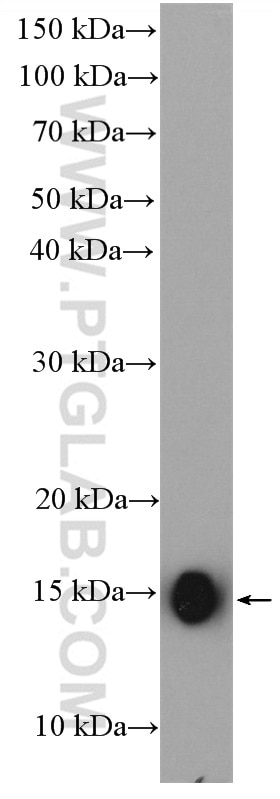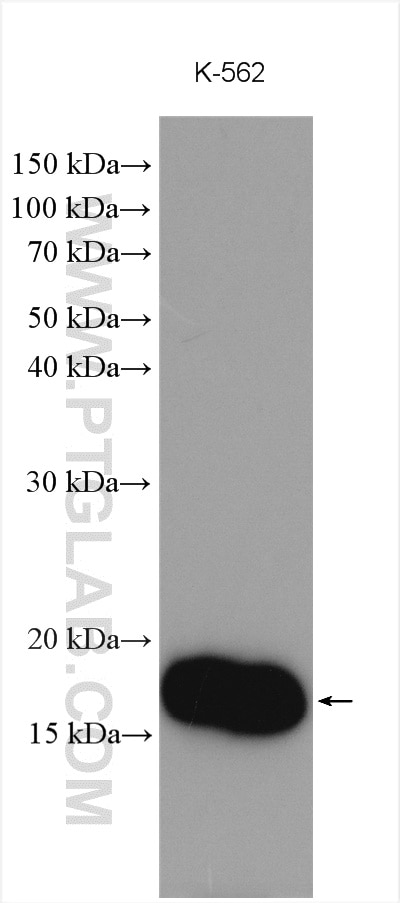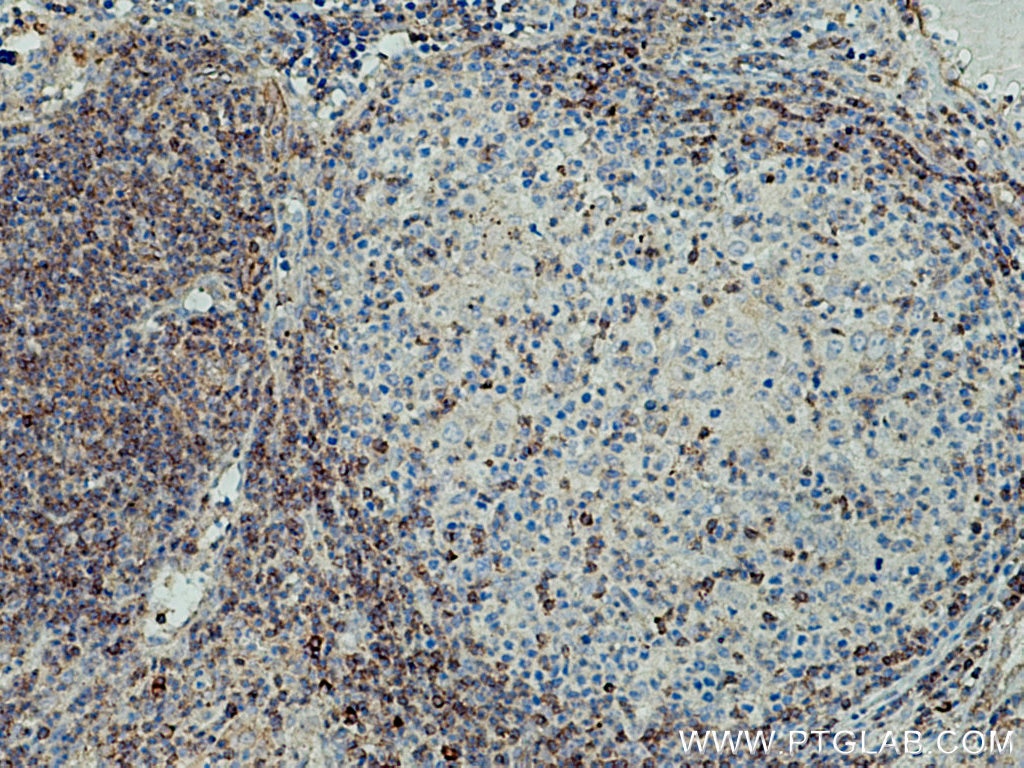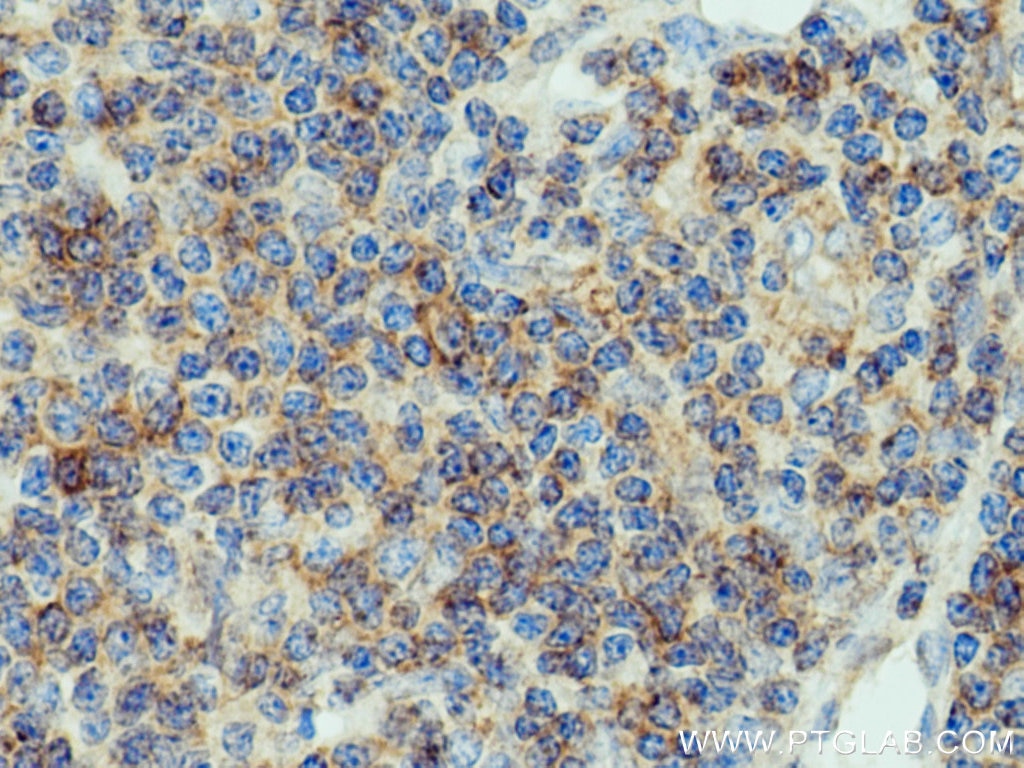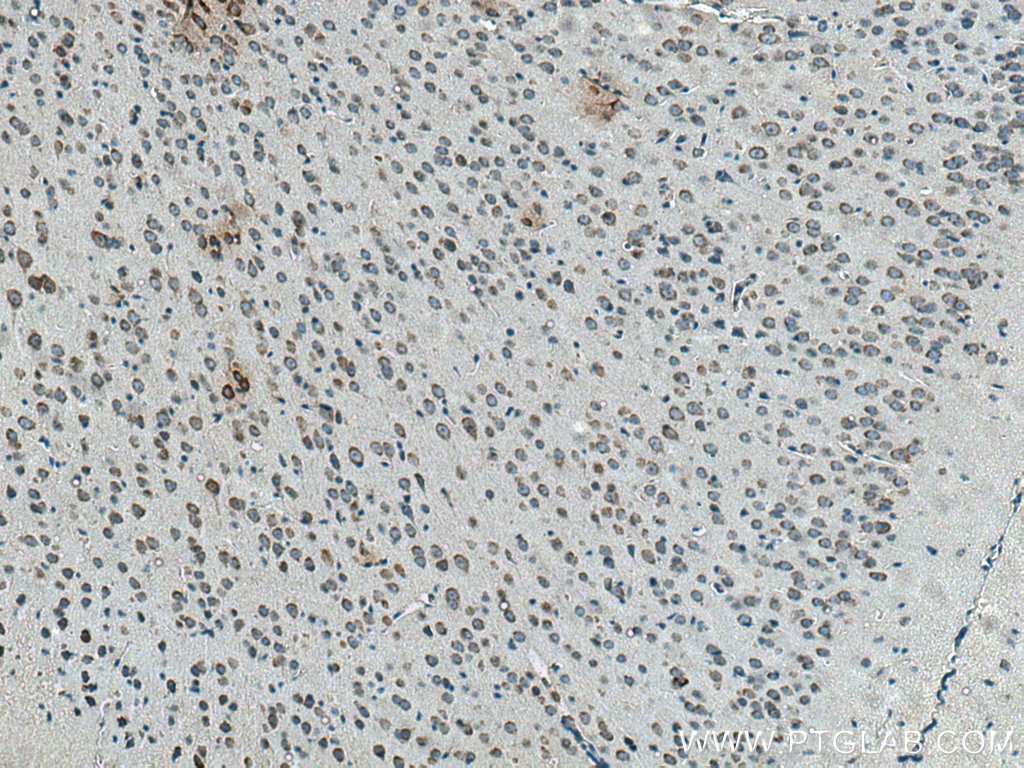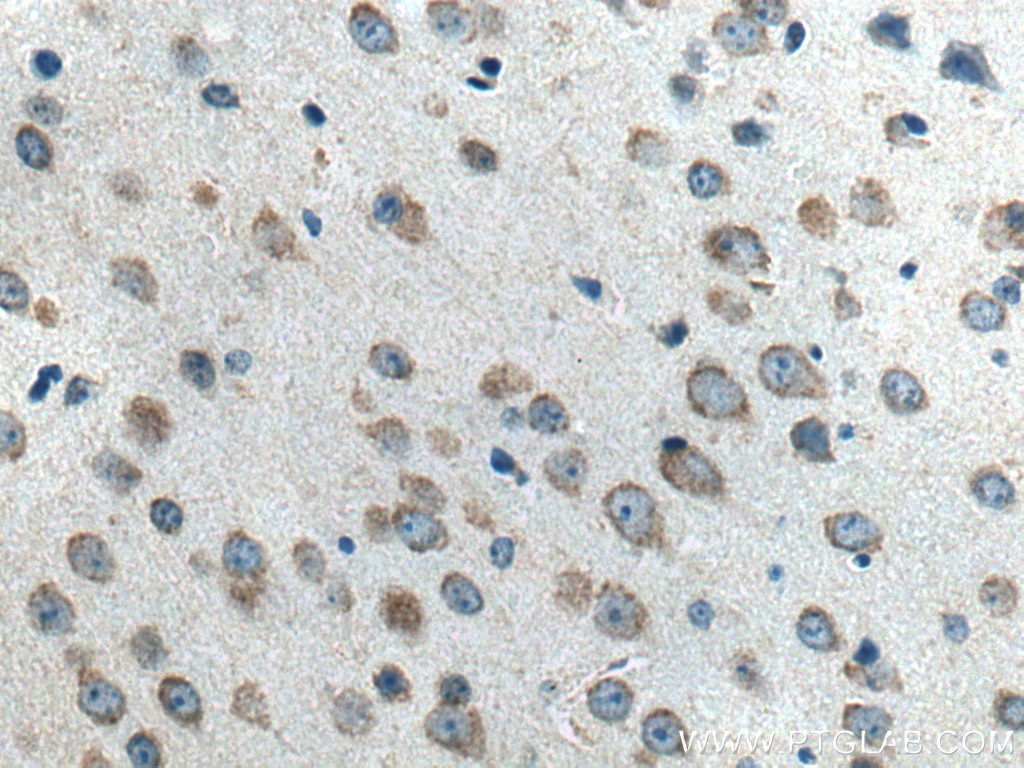- Phare
- Validé par KD/KO
Anticorps Polyclonal de lapin anti-IFITM1
IFITM1 Polyclonal Antibody for WB, IP, IHC, ELISA
Hôte / Isotype
Lapin / IgG
Réactivité testée
Humain, rat, souris et plus (3)
Applications
WB, IHC, IF, IP, ELISA
Conjugaison
Non conjugué
N° de cat : 11727-3-AP
Synonymes
Galerie de données de validation
Applications testées
| Résultats positifs en WB | cellules HepG2, cellules K-562 |
| Résultats positifs en IP | cellules ROS1728 |
| Résultats positifs en IHC | tissu de lymphome humain, tissu cérébral de souris il est suggéré de démasquer l'antigène avec un tampon de TE buffer pH 9.0; (*) À défaut, 'le démasquage de l'antigène peut être 'effectué avec un tampon citrate pH 6,0. |
Dilution recommandée
| Application | Dilution |
|---|---|
| Western Blot (WB) | WB : 1:500-1:1000 |
| Immunoprécipitation (IP) | IP : 0.5-4.0 ug for 1.0-3.0 mg of total protein lysate |
| Immunohistochimie (IHC) | IHC : 1:50-1:500 |
| It is recommended that this reagent should be titrated in each testing system to obtain optimal results. | |
| Sample-dependent, check data in validation data gallery | |
Applications publiées
| KD/KO | See 5 publications below |
| WB | See 23 publications below |
| IHC | See 2 publications below |
| IF | See 2 publications below |
| FC | See 4 publications below |
Informations sur le produit
11727-3-AP cible IFITM1 dans les applications de WB, IHC, IF, IP, ELISA et montre une réactivité avec des échantillons Humain, rat, souris
| Réactivité | Humain, rat, souris |
| Réactivité citée | Chèvre, Humain, porc, Singe vert d'Afrique |
| Hôte / Isotype | Lapin / IgG |
| Clonalité | Polyclonal |
| Type | Anticorps |
| Immunogène | IFITM1 Protéine recombinante Ag2320 |
| Nom complet | interferon induced transmembrane protein 1 (9-27) |
| Masse moléculaire calculée | 14 kDa |
| Poids moléculaire observé | 14-17 kDa |
| Numéro d’acquisition GenBank | BC000897 |
| Symbole du gène | IFITM1 |
| Identification du gène (NCBI) | 8519 |
| Conjugaison | Non conjugué |
| Forme | Liquide |
| Méthode de purification | Purification par affinité contre l'antigène |
| Tampon de stockage | PBS with 0.02% sodium azide and 50% glycerol |
| Conditions de stockage | Stocker à -20°C. Stable pendant un an après l'expédition. L'aliquotage n'est pas nécessaire pour le stockage à -20oC Les 20ul contiennent 0,1% de BSA. |
Informations générales
IFITM1(interferon induced transmembrane protein), also named DSPA2a or interferon-induced protein 17 (IFI17), belongs to the CD225 family. It has two transmembrane domain and serves as an IFN-induced antiviral protein that mediates cellular innate immunity to at least three major human pathogens, influenza A H1N1 virus, West Nile virus (WNV), and dengue virus , by inhibiting the early steps of replication. IFITM proteins are recently identified as viral restriction factors that inhibit infection mediated by the influenza A virus (IAV) hemagglutinin (HA) protein. Also they serve as important components of the innate immune system to restrict HIV-1 infection.
Protocole
| Product Specific Protocols | |
|---|---|
| WB protocol for IFITM1 antibody 11727-3-AP | Download protocol |
| IHC protocol for IFITM1 antibody 11727-3-AP | Download protocol |
| IP protocol for IFITM1 antibody 11727-3-AP | Download protocol |
| FC protocol for IFITM1 antibody 11727-3-AP | Download protocol |
| Standard Protocols | |
|---|---|
| Click here to view our Standard Protocols |
Publications
| Species | Application | Title |
|---|---|---|
Nature Mitotic progression following DNA damage enables pattern recognition within micronuclei. | ||
Nature Intrinsic retroviral reactivation in human preimplantation embryos and pluripotent cells.
| ||
Nat Immunol Exosomes mediate the cell-to-cell transmission of IFN-α-induced antiviral activity. | ||
Mol Ther Type 1 Interferon Responses Underlie Tumor-Selective Replication of Oncolytic Measles Virus. | ||
Nat Commun IFITM3 restricts virus-induced inflammatory cytokine production by limiting Nogo-B mediated TLR responses | ||
Cell Rep IFITM Proteins Restrict HIV-1 Infection by Antagonizing the Envelope Glycoprotein.
|
